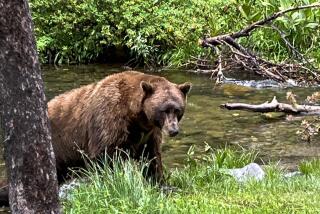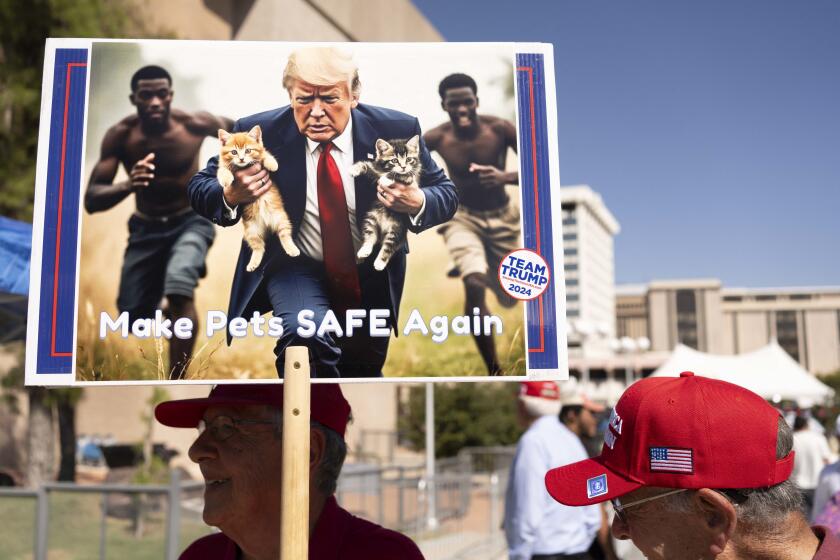Editorial: If grizzly bears returned, would Californians be safe?
Things could get a little bit wilder in California in the not-too-distant future.
OR-7, the celebrated wolf that wandered from northeastern Oregon all the way into California, didn’t stay here. But he settled fairly close, in southwestern Oregon, with a mate. They have since produced three pups, increasing the chances that they’ll wander back again, and that California will get some new permanent residents in coming years.
And there’s more. At about the same time that wildlife officials were capturing images of the pups, an environmental group filed a petition with the U.S. Fish and Wildlife Service calling for the reintroduction of grizzly bears in several Western states, including California.
There’s a certain romance to wolves and bears. Both were hunted to extinction in the state about 90 years ago. Both are predators that long had a natural place in California. Efforts under the Endangered Species Act to restore both have had remarkable success in the Yellowstone National Park area. But there are major differences between the two species when it comes to considering them as our neighbors.
Wolves, if they returned to California, would be reintroducing themselves. OR-7’s appearance here was a natural event — the expansion of wolf territory, made possible because there was enough land and prey to sustain him. Wolves also have an undeserved, outdated reputation for being wanton attackers of people. According to the state Department of Fish and Wildlife, they present little danger to humans.
That’s not to say the reappearance of wolves would create no problems. Ranchers are especially concerned about losing animals from their herds. But state officials already are preparing for such eventualities; one solution might be at least partial compensation for lost domesticated animals.
Grizzlies are a different story. Though their eradication in California remains one of the state’s shames, it’s far from clear that they have a natural place here any longer. They have not made their way close to California on their own. Yellowstone National Park and its surroundings have fewer people living in much larger territories. California has more than 10 times the human population than it did when the last wild grizzly died. Its parks and forests in the Sierra Nevada are heavily visited, and grizzlies can be unpredictable in the wild. Female grizzlies are particularly aggressive when a person comes within a certain distance of her cubs.
Of course, there’s a NIMBY-like arrogance in saying that grizzlies should stay in the Yellowstone area, where there have been several fatal attacks in recent years. But the far higher population density in California, and the far greater number of tourists in the wilderness parks and forests here, make the potential for clashes between humans and bears a worrisome prospect.
Follow the Opinion section on Twitter @latimesopinion
More to Read
A cure for the common opinion
Get thought-provoking perspectives with our weekly newsletter.
You may occasionally receive promotional content from the Los Angeles Times.










